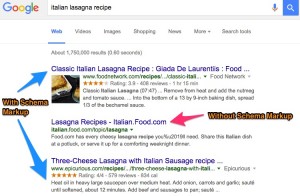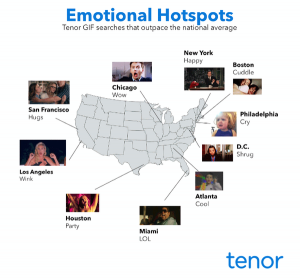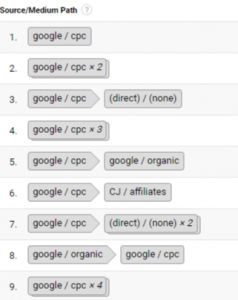— August 22, 2019
Blogging is one of the most cost-effective and efficient marketing tools available for business owners and entrepreneurs. In order to use blogging to communicate with your audience and drive traffic to your website, you need to understand some important do’s and don’ts. Keep reading to discover what they are and how you can get the most out of your business’ blog.
The Benefits Of Blogging For Your Business

There are some important do’s and don’ts to consider while blogging. Keep reading to learn what they are!
Blogging has many powerful benefits for your company and will help your brand in tremendous ways, from boosting visibility to establishing credibility. Here are some great reasons why your business should have an active blog.
- Boosts your visibility. Search engines love fresh, new content that is relevant to the people searching the web. Making sure you add new posts on a consistent schedule will help your odds of being found through an internet search.
- Positions your business as the go-to expert in your field. Knowledge is power. Show your audience and competitors you know what you’re talking about and have a vast amount of expertise in your industry.
- Gives you access to an audience on a national platform. Blogging is a great way to reach people outside of your local region on a national, and even international, level. Anyone who has access to a computer or mobile device can find you!
- Establishes credibility. Sharing information from other industry leaders and collaborating with them establishes the credibility of your business as a strong force in your field.
- Amplifies awareness and recognition of your brand. Publishing a blog post is quick and easy! This ability to share posts on multiple different channels increases your brand’s awareness.
- Increases traffic to your website and social media profiles. Since your blog should be on your website, people have to visit it to read your posts and will be more likely to explore other areas of your site.
If your business isn’t blogging and building a social media presence, your potential customers will be wondering why they don’t see you on the web and may go with your competitor instead.
Valuable Blogging Statistics
Numbers don’t lie. These statistics back up how valuable blogging is for businesses and how you can benefit from it.

There are many positive benefits from blogging, including increased sales leads and web traffic.
- Lead Generation: Companies see at least 67 percent more leads from blogging.
- Increased Return On Investment: Businesses that blog see a 13 percent return on their investment.
- Lower Cost: Blogging as a marketing tool costs 60 percent less than traditional outbound methods.
- Back Linking: Businesses who blog receive 97 percent more links back to their website than those who don’t.
- Higher Search Engine Results: Businesses who post regularly and consistently with keywords in mind are more likely to be on the first page of Google search results, and 75 percent of people do not go beyond the first page of results.
- Improved Customer Acquisition: 57 percent of businesses blogging at least once a month gain a new customer; the stat jumps to 82 percent when they blog daily.
- Increased Time Spent Reading: People spend three times longer reading blog posts than reading emails.
- Stronger Buying Influence: 61 percent of consumers state they have been influenced to purchase from a company based on a blog post.
- Become A Trusted Source: Blogs are the fifth most trusted source of information for consumers.
It is amazing how effective blogging can be! The ability to share news, photos and opinions in one place is one of the greatest technological advances in the public relations industry to date. Surprisingly though, many businesses are still not taking advantage of the benefits and proven results.
8 Do’s Of Blogging
Hopefully, after seeing the benefits and the numbers backing them up, you’re ready to jump on the blogging train. As you start to put together your business’s blog there are some important do’s you should know in order to get the greatest results. These eight suggestions will help you reach your blogging goals.
- Use Strong Headlines: Your headline is the first thing a reader sees and helps them determine if your content is worth reading. There are numerous tools on the web that will help you generate strong, attention-grabbing blog titles based on your topic. CoSchedule has a terrific headline analyzer that scores your titles on many different criteria.
- Post Often: The more frequently you post, the greater the results you will see. Updating your blog at least once a week with new content is a great target but posting more often is even better. Whatever you decide for your posting schedule, make sure to be consistent with it.
- Use Keywords Strategically: Gone are the days of keyword stuffing, which can appear spammy. Stick to one or two specific keywords and use them strategically through your post. They should flow naturally in your writing and appear in your title, subheadings and first sentence.
- Stick With It: Blogging, like all other inbound marketing techniques, takes time – at least 12-18. Don’t give up if you do not see the results you want immediately. Your patience will be rewarded in the end.
- Use Graphics: Graphics are a great way to catch the reader’s attention and bring them down the page to keep reading. Make sure they are relevant to your post and add to what you’re saying. Images with faces in them receive an extra SEO boost, too.
- Write At length: Typically, long-form blog posts of at least 1500 words do better in the search results than short-form posts. They provide more value and information for your audience and showcase your expertise. Short-form posts of 300-500 words also hold value and are a great addition providing a quick resource for readers; however, the meat of your blogging efforts should focus on the longer posts.
- Proofread: Proofreading is a vital part of successful blogging but is often overlooked. If editing isn’t your strength, set aside your post for a few hours and come back with fresh eyes; it’s easier to see mistakes and typos after giving yourself a break. Before you publish your post, ask someone on your team to give it a once over to make sure you didn’t miss anything obvious.
- Share On Social Media: After you publish your blog posts, don’t forget to share them on all of your social media platforms! This cross-channel communication is a great way to gain visibility, acquire new readers and reach potential new customers.

Successful blogging takes patience and consistency; don’t give up!
6 Don’ts of Blogging
Now that you know what you should do, it’s important to also understand what you need to avoid. When planning your blogging strategy and outlining your posts, these six mistakes can have a negative impact on your efforts.
- Inconsistent Posting: Publishing blogs on a regular basis is important to keeping readers engaged and returning back for more. Have a set day of the month or week designated for publishing new blog posts. This will keep you on track and your readers effectively engaged and knowing when they can expect your next post (plus it’s really good for SEO).
- Irrelevant Topics: Readers stick with blogs they read on a regular basis because they can depend on the content to be reliably informative. While it’s important to have diverse content within your specific set of topics, straying too far might deter your audience from staying loyal readers.
- Negative Posts: Content that is positive in nature is more likely to be shared by readers than negative content. Blogs are a great way to convey your thoughts and opinions, but keep it upbeat and positive to increase your chance of a post getting shared on different channels.
- Poor Design: Blogs that are outdated or unorganized, could be losing readers simply because they find the site difficult to navigate. A clean and simple design is better than a complicated set up that can hinder the audience’s ability to find information.
- It’s Unreadable: Your audience is just as mobile as you are, meaning they might attempt to read blogs while they’re on-the-go via a mobile device or smartphone. Ensure your blog is optimized for both desktop and mobile viewing to reach out to everyone in your target audience.
- You Ramble On: Your blog should not be treated as a diary for posting your random thoughts on different matters. Make sure that what you write adds value for your audience and is relevant to your brand. Keep your posts on topic and to the point rather than going off on tangents.
With time and effort, blogging will be one of the biggest game-changers for your company, and at a fraction of the cost of other techniques. Avoid simple errors while putting into practice the effective tips I have offered to allow your blog to flourish and reach new heights.
Digital & Social Articles on Business 2 Community
(32)






